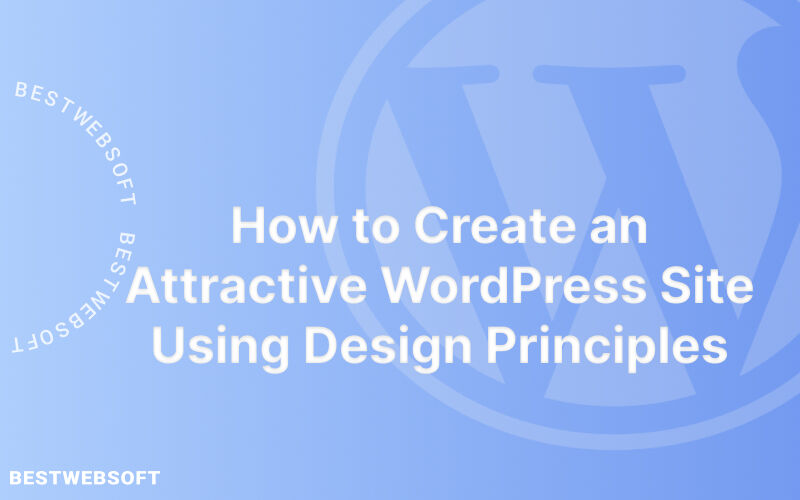
When it comes to building an attractive and engaging website, design is the name of the game. WordPress, one of the most popular website platforms, offers an array of tools and techniques to help you create a visually stunning website that captures your audience’s attention. In this article, we’ll explore the fundamental design principles that can transform your WordPress site into an irresistible online presence.
1. Start with a Clear Purpose
Before diving into design, it’s crucial to understand the purpose of your website. Are you running a blog, an e-commerce site, or a portfolio? The design should align with your goals. Here’s how to get started:
1.1 Define Your Objectives: What do you want to achieve with your website? Are you aiming to inform, sell, or entertain? Understanding your objectives is the first step in creating a purpose-driven design.
1.2 Know Your Audience: Identify your target audience, their preferences, and what they expect from your site. This knowledge will shape your design choices.
2. Choose the Right Theme
Selecting the perfect WordPress theme is like picking the right outfit for your website. A well-designed theme can enhance user experience and set the tone for your site. Consider these factors when choosing a theme:
2.1 Responsiveness: Ensure your theme is responsive, meaning it adapts to different screen sizes, as more people browse on mobile devices.
2.2 Customizability: Opt for a theme that allows you to customize elements such as colors, fonts, and layouts to match your brand.
2.3 Compatibility: Ensure your theme is compatible with the latest WordPress version and essential plugins.
3. Prioritize User-Friendly Navigation
Smooth navigation is key to keeping your visitors engaged. Confusing or cluttered menus can deter users. Here’s how to enhance navigation:
3.1 Logical Menu Structure: Organize your menu items logically, creating a clear hierarchy of pages and content.
3.2 Intuitive Labels: Use descriptive and user-friendly labels for menu items. Users should instantly understand where each link leads.
4. Master the Art of Typography
Typography plays a pivotal role in website design. Your choice of fonts can convey your brand personality and make your content more readable. Follow these tips:
4.1 Font Pairing: Combine fonts effectively, choosing a readable font for the body text and a stylish one for headings.
4.2 Font Size: Ensure text is legible by using an appropriate font size for both desktop and mobile users.
4.3 Line Spacing: Proper line spacing improves readability. Use ample space between lines for a comfortable reading experience.
5. Harness the Power of Imagery
Visual content is a cornerstone of web design. Stunning images can convey emotions, engage users, and make your site memorable.
5.1 High-Quality Images: Use high-resolution images that are relevant to your content.
5.2 Image Optimization: Compress images to maintain fast loading times, which are essential for user experience and SEO.
5.3 Consistency: Maintain a consistent style and color scheme for images to create a cohesive look.
6. Embrace White Space
White space, or negative space, is the area between elements on your website. It might be empty, but it’s incredibly valuable for design.
6.1 Improve Readability: Adequate white space around text and images makes your content more readable and less overwhelming.
6.2 Highlight Important Elements: Use white space to draw attention to key elements, such as call-to-action buttons.
7. Implement Color Psychology
Colors evoke emotions and can influence user behavior. Your color choices should align with your brand and the emotions you want to convey.
7.1 Color Harmony: Create a color palette that includes primary and secondary colors that complement each other.
7.2 Brand Consistency: Ensure your chosen colors reflect your brand’s identity and values.
8. Focus on Mobile Optimization
A significant portion of internet traffic comes from mobile devices. To cater to this audience, your design must be mobile-friendly.
8.1 Responsive Design: Ensure your website looks and functions well on various screen sizes.
8.2 Mobile Testing: Regularly test your site on mobile devices to catch and fix any issues.
9. Optimize Loading Speed
A slow website can frustrate users and harm your SEO ranking. Follow these tips to keep your site speedy:
9.1 Image Compression: As mentioned earlier, compress images to reduce loading times.
9.2 Minimize Plugins: Only install essential plugins and regularly update them to maintain site performance.
10. Test and Iterate
Your WordPress site is a work in progress. Regularly gather feedback from users and make improvements accordingly.
10.1 User Feedback: Use tools like surveys, heatmaps, and analytics to understand user behavior and preferences.
10.2 Continuous Improvement: Regularly update your content, design, and features to keep your site fresh and engaging.
Conclusion: Design Your Way to Success
Creating an attractive WordPress site using design principles is within reach for beginners. Start with a clear purpose, choose the right theme, and prioritize user-friendly navigation. Pay attention to typography, imagery, white space, and color psychology. Ensure mobile optimization and fast loading speed while continuously seeking feedback and making improvements.
By following these design principles, you’ll not only have an aesthetically pleasing website but also one that effectively engages your audience and achieves your online objectives. So, start designing, and watch your WordPress site become an irresistible online masterpiece.

